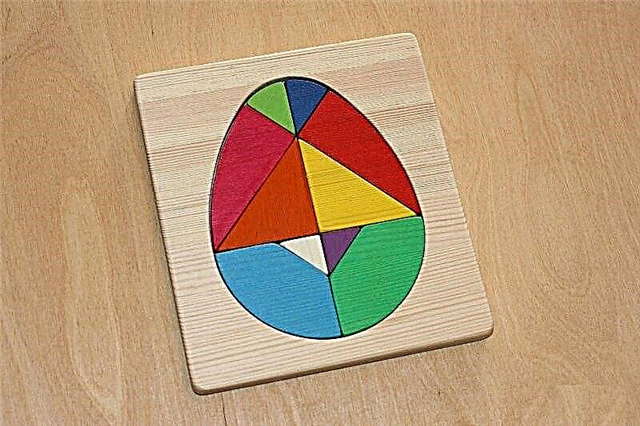Strabismus in newborns, as well as the lack of long-term fixation of the gaze on an object, scares almost every parent. Let's try to understand the reasons for such an unusual feature of the baby.
Why does strabismus develop in babies?
In order to understand why strabismus occurs in a newborn child, it should be remembered that the development of the functional characteristics of the organ of vision becomes possible only in extrauterine life, that is, immediately after birth.
This fact is explained by the lack of a sufficient amount of light that stimulates the receptors of the retina (which, in turn, allows the formation of a visual image), as well as the failure of the refractive system of the eye due to the lack of visual skills.
In addition, having been born and having made the first attempt to see this world, the child is faced with the problem of low visual acuity.
 It is based on several factors: the small size of all structures of the eye; weak refractive power; lack of experience in using the area of central vision; difficulties in the formation and analysis of the visual image.
It is based on several factors: the small size of all structures of the eye; weak refractive power; lack of experience in using the area of central vision; difficulties in the formation and analysis of the visual image.
A certain factor that allows strabismus to fully manifest itself is the lack of the ability of infants to combine the image received from each eye into one picture of the reality that is taking place.
Consequently, the baby cannot form the so-called binocular vision, which makes it possible to assess the surrounding world in a volumetric version. Therefore, it is believed that when strabismus in newborns goes away completely, this indicates the emergence of a mechanism for binocular fixation of the object.
Taking into account all the functional and anatomical features of the eyes of babies, we can safely say that orthophoria (the so-called "correct" position of the eyes, in which the visual axes are parallel) are temporarily inaccessible to them.
Adults are also prone to such squint, especially in cases associated with fatigue, stress, high visual stress. This happens due to the fact that, due to the above reasons, the control of the brain over the correct position of the eyes is temporarily lost, some are relaxed or, conversely, other muscles that hold the eyeballs in the correct position are overstrained. This ultimately leads to short-term bevelling of the eyes.
When does strabismus go away in newborns?
Strabismus in infants and newborns, not provoked by any organic cause, will go away by itself by 2 - 3 months of life, when the eye begins to function actively.
If nothing changes by 4, 5, and even more so by 6 months, the child should be shown to an ophthalmologist.
When should a child be afraid of strabismus?
There are a number of factors that predispose a child to develop true strabismus:
 Complicated labor (a long anhydrous period, the use of a vacuum extractor or obstetric forceps) pose a certain danger to the child. Even minor microtrauma, bleeding in the brain or in the organ of vision can lead to strabismus.
Complicated labor (a long anhydrous period, the use of a vacuum extractor or obstetric forceps) pose a certain danger to the child. Even minor microtrauma, bleeding in the brain or in the organ of vision can lead to strabismus.- Infectious diseases of the mother during pregnancy, especially in the first trimester, can lead to pathology in the baby. Damage to the structures of the eye in a child can be congenital, when the development of the pathological process occurs even in the prenatal period. Parasitic, bacterial and viral agents, entering the child's body through the placental blood, are carried to all organs of the fetus. The peculiarities of the blood supply to the eye create optimal conditions for their preservation and reproduction, as a result of which the structure of the organ is disturbed, and at the same time it becomes impossible to perform functions.
- Infectious diseases of the newborn and baby, their complications. Any, even minor, viral or bacterial disease can lead to a general immune response affecting all organs and tissues of the developing organism.
- Hereditary eye diseases, including features of refraction. The structural features of all tissues and structures of the eye are inherited by the child from parents and close relatives.
If among your relatives there are people who are nearsighted, farsighted or have astigmatism, you should especially carefully monitor the baby's visual acuity, and, therefore, be wary of strabismus.
- A number of hereditary diseases, one of the manifestations of which is strabismus.
- Neurological diseases of the baby. Violation of the innervation of the muscles of the eyeball, pathological processes occurring in the visual zones of the brain, can lead to a violation of the correct position of the eyes.
What leads to true strabismus in a child?
True strabismus in a child usually develops as a result of any defects in the structure or work of the organ of vision.
 common reason are refractive errors - hyperopia, myopia, astigmatism... In this case, long-term uncorrected vision with the help of spectacle or contact correction leads to this violation. After all, the brain, receiving two pictures that are absolutely different in their clarity and details, gets tired of combining them into one image, and therefore, as it were, turns off the worse seeing eye. For high myopia, divergent squint is characteristic, and for hyperopia, convergent squint. This is explained by the fact that with hyperopia it is necessary to overcome the weakness of the refractive system. Persistent spasm of the ciliary muscle is the reason that initially persistent eye convergence develops into squint. In the case of myopia, the refractive power is too strong. Therefore, to work at close range, it is necessary to reduce it, and the eyes diverge, which leads to the appearance of divergent strabismus;
common reason are refractive errors - hyperopia, myopia, astigmatism... In this case, long-term uncorrected vision with the help of spectacle or contact correction leads to this violation. After all, the brain, receiving two pictures that are absolutely different in their clarity and details, gets tired of combining them into one image, and therefore, as it were, turns off the worse seeing eye. For high myopia, divergent squint is characteristic, and for hyperopia, convergent squint. This is explained by the fact that with hyperopia it is necessary to overcome the weakness of the refractive system. Persistent spasm of the ciliary muscle is the reason that initially persistent eye convergence develops into squint. In the case of myopia, the refractive power is too strong. Therefore, to work at close range, it is necessary to reduce it, and the eyes diverge, which leads to the appearance of divergent strabismus;- pathological processes occurring in the central area of vision (macula) also lead to the fact that the eye, trying to see as clearly as possible, independently determines the area of clearer vision, which can be located far to the side. Therefore, it is mowed;
- disruption of the work and innervation of the eye muscles, keeping the eye in the correct position can also cause strabismus.
How is true strabismus treated?
An ophthalmologist can choose a special treatment that allows, with the help of spectacle correction, special gymnastics and hardware methods, to gradually minimize or even eliminate strabismus. Surgical treatment is used in severe cases in children over 2 years of age.

 Complicated labor (a long anhydrous period, the use of a vacuum extractor or obstetric forceps) pose a certain danger to the child. Even minor microtrauma, bleeding in the brain or in the organ of vision can lead to strabismus.
Complicated labor (a long anhydrous period, the use of a vacuum extractor or obstetric forceps) pose a certain danger to the child. Even minor microtrauma, bleeding in the brain or in the organ of vision can lead to strabismus. common reason are refractive errors - hyperopia, myopia, astigmatism... In this case, long-term uncorrected vision with the help of spectacle or contact correction leads to this violation. After all, the brain, receiving two pictures that are absolutely different in their clarity and details, gets tired of combining them into one image, and therefore, as it were, turns off the worse seeing eye. For high myopia, divergent squint is characteristic, and for hyperopia, convergent squint. This is explained by the fact that with hyperopia it is necessary to overcome the weakness of the refractive system. Persistent spasm of the ciliary muscle is the reason that initially persistent eye convergence develops into squint. In the case of myopia, the refractive power is too strong. Therefore, to work at close range, it is necessary to reduce it, and the eyes diverge, which leads to the appearance of divergent strabismus;
common reason are refractive errors - hyperopia, myopia, astigmatism... In this case, long-term uncorrected vision with the help of spectacle or contact correction leads to this violation. After all, the brain, receiving two pictures that are absolutely different in their clarity and details, gets tired of combining them into one image, and therefore, as it were, turns off the worse seeing eye. For high myopia, divergent squint is characteristic, and for hyperopia, convergent squint. This is explained by the fact that with hyperopia it is necessary to overcome the weakness of the refractive system. Persistent spasm of the ciliary muscle is the reason that initially persistent eye convergence develops into squint. In the case of myopia, the refractive power is too strong. Therefore, to work at close range, it is necessary to reduce it, and the eyes diverge, which leads to the appearance of divergent strabismus;

